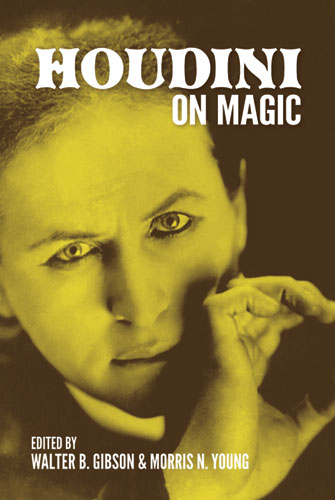

A boy lies on the roof of a car with his head propped on his hand. Men and women, every one in a hat, stand shoulder to shoulder. Houdini answered by lobbying Congress for stronger anti-fraud laws.Īs I look at that photograph of Houdini suspended by his feet, I see it all. The Spiritualist mafia responded with death threats. Then during his stage shows he called out the local spook-crooks by name, listed their crimes, and exposed their methods. He toured the country with a team of undercover investigators (sometimes even attending séances in disguise). So when he saw people exploiting it, he went into a white-hot rage. He felt the vulnerability that death brings. He needed to connect like a prizefighter, fist to jaw with a splatter of blood.Īnd he came out swinging when spiritualism-the belief that the dead could communicate with the living-spawned racketeers who robbed the bereaved. When silent movies became the hot new medium, Houdini formed a film corporation and starred in stunt-filled romantic serials. It was Houdini, calling from across town. A little later the officers-smugly congratulating themselves on stumping the Great Self-Liberator-would hear the telephone ring. He would challenge police to throw him naked into a jail cell (always a great photo op, with manacles discreetly covering his privates) his clothes were locked in an adjoining cell. The buttoned-up world devoured pictures of Houdini’s physique as he leaped handcuffed from the bridges we crossed every day. He was made of flesh-taut, handsome, muscular-and never let us forget it. Let me explain.īut there was nothing fairyland about Houdini (the subject of a major exhibition that opened recently at the Jewish Museum, in Manhattan, with a handsome catalogue by Brooke Kamin Rapaport). So why do I build a shrine to this man? Because Houdini wasn’t just a magician. Many magicians were more refined than Houdini. I bought them at auction for twice what my parents paid for the house I was brought up in. Two personal letters from Houdini are framed under museum glass. On the walls hang handcuffs designed to encase the entire hand (they look like a device for torturing martyrs) and a man-size black wooden cross (gimmicked with internal knives to allow an instantaneous release). Books by or about him fill eight feet of shelves.


But I have it framed and hanging in a room in my home that is devoted entirely to Houdini. It’s just a publicity photo-there were thousands like it taken over the course of Houdini’s career. He’s hanging upside down in a straitjacket over a vast crowd in the heart of an American metropolis. I’m looking at a photograph of Harry Houdini. Tightly trussed, Harry Houdini dangles above a crowd in the early 1920s.


 0 kommentar(er)
0 kommentar(er)
